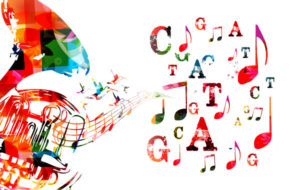Recently I wrote about the completion of the human genome sequencing project and the promise, problems and questions that the project has generated in the last decade and a half. One of the biggest realizations that I had from researching and writing that post is that our human genome makes us more alike than different at the molecular level, yet there is incredible variability in the human species around the globe.
I started to think about other things where the basic building blocks were the same, yet the final products were so very different—and I landed in the middle of a symphony orchestra.
Orchestras, if we look at the instruments that they have at their disposal, are very similar: dare I say 99% identical? For instance the instruments listed in the February 2017 roster for the New York Philharmonic Orchestra on Wikipedia (1) are very similar to the lists of instruments listed for the musicians of the Atlanta Symphony Orchestra on its web site (2). Numbers and groupings might vary, but the instruments are the same.
However no one would argue that the New York Philharmonic Orchestra and the Atlanta Symphony Orchestra and Chorus are interchangeable. Experiencing one is not the same as experiencing the other, and two separate experiences of either are often completely different.
The orchestral “DNA” is the same: highly trained musicians playing essentially the same set of instruments, and quite often the same piece of music. What makes each experience of these organizations unique is the when, the where and the how of the expression of that DNA.
Continue reading “Orchestrating the Genome: Final Thoughts for #HumanGenomeMonth”

